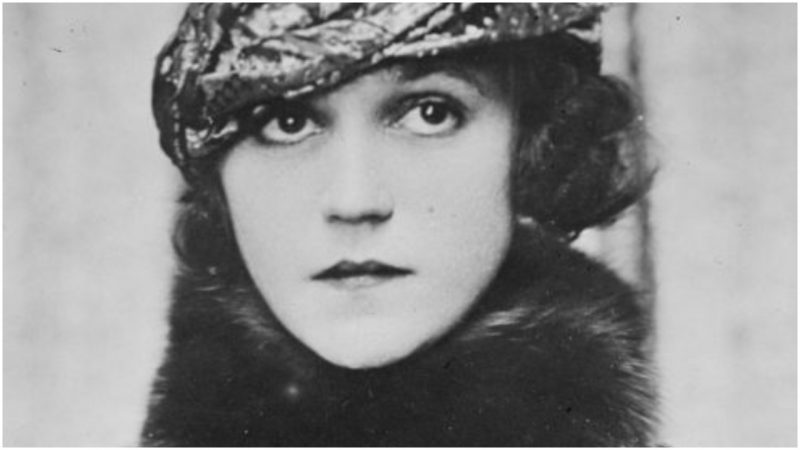Red carpet selfies, autographs on celebrity merchandise, and even stars’ personal belongings bought at auctions keep luring fans to the idolized, sparkly charms of Tinseltown. Most of these objects are of no value, really, such as Scarlett Johansson’s tissue, which sold for a crazy $5,300 in 2008, or Marylyn Monroe’s final signed check, sold for $15,000 in 2012. You might be surprised to learn that the Oscar statues are made from basically nothing of any material value–or maybe you wouldn’t.
Of course, these types of objects mean different things to different people. Every person venerates objects according to their personal belief and attachment to the stories and legends behind the objects. However, very often a catchy made-up tale attached to an object can elevate its significance and even, as the following story of the actress Alice Brady has shown, establish its place in the historical records of Hollywood.
The legend about Alice Brady’s Oscar, known among cinema connoisseurs and retold in books about the film industry, began in 1937. Brady was nominated for Best Supporting Actress after her role in the film In Old Chicago. The Oscar ceremony was held in March of 1938 but prior to this gala event, Brady broke her ankle and was unable to attend. At the ceremony, Brady was named the winner, so while the entire audience and her colleagues waited for her to appear onstage and receive the award and give some honorable speech, the unthinkable happened.
A decade earlier we had the roaring 20s – below we have the Top 5 Most beautiful & Iconic Flappers, can you name them?
An unknown man appeared on stage and accepted the award on her behalf. The attendees were confused as the man came and went, lost in the crowd in a second, never revealing his identity. Familiar with Brady’s poor health condition, the Academy staff assumed that Brady had sent someone to pick up her award if needed.
A few days later, when the Oscar-winning actress contacted the Academy and asked how she should obtain her prized statue, the Academy realized that they had been scammed by someone who vanished without a trace. The attempts to find the impostor who stole the trophy turned out to be futile, since his identity was never discovered.
The Oscar was lost forever. In time, many scenarios concerning this matter came to light, though none was ever verified. According to the essay “Stolen Oscars” by Olivia Rutigliano, the Oscar was initially presumed to have been secretly sold but after her interview in 1965 with the owner of Collectors Bookstore, a Hollywood memorabilia shop, Rutigliano learned that although collectors knew the legend well, no one never found out what became of the award.
Another theory of the forsaken award suggests that it had never even vanished at all. According to some versions of the story, Brady was issued a replacement award by the Academy but due to her unfortunate death from cancer the following year, she never saw the substitute.
Many years later, in 2008, at an auction in Dallas, a Best Supporting Actress Award from the 1937 ceremony was sold, showing Alice Brady’s name on the plaque (the well-known golden Oscar statues were introduced in 1943). Reportedly, this was the replacement that the Academy issued to Brady after the original award was stolen. The Alice Brady Estate Archive also auctioned off several other items, including a newspaper clipping of Ms. Brady receiving the substitute Oscar. This made it quite doubtful that she had died before receiving the award.
The media also took part in the possible debunking of this Oscar-imposter myth and many articles contributed to its plausible outcomes. The earliest report on the ceremony scandal was published the following day by the Los Angeles Times, reporting that the man who received the award was none other than Henry King, the director of the film who then brought the award to Brady.
Another article, “Alice Brady’s Road to Glory,” told of Brady’s celebrating with friends and colleagues who brought her the Oscar right after the Oscar after-party. The award was brought with a slip of paper which stated that she should return it to the Academy soon, so that her name could be engraved on the plaque (Oscars became personalized and pre-engraved in 2010).
The Los Angeles Times published another article later in 1938, this time stating that the engraved Oscar was handed to Brady by her co-star in Goodbye Broadway, Charles Winninger. Purportedly, the Oscar was returned to Brady two weeks after she had won it and so it had never been stolen, thus there was no replacement. Regarding this theory, the newspaper clip sold in the auction displays Brady holding the original award, not the substitute, and therefore, the auctioned Oscar was also genuine.
So how did the legend about the Oscar con man come about, anyway? Whatever the reasons, it makes for a richly entertaining story
